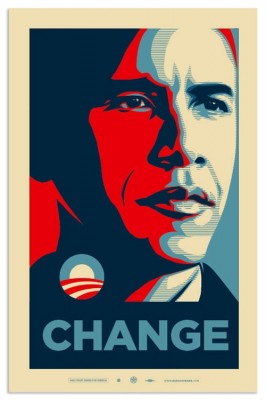Let’s do a little test together. Watch the video below which features Trish Mueller, CMO of Home Depot and Pete Krainik, founder of The CMO Club, and make note of the marketing insights you gained. Next, please read my interview below, also with Trish Mueller. Then jot down your key takeaways. You’ll have to trust me that both are well worth your time and in no way are redundant.
Drew: What  innovations/programs are you particular proud of?
innovations/programs are you particular proud of?
I am proud of the seamless transition we’ve made into the digital, social and mobile world, and I am most proud of how our team continues to innovate in a “VUCA” world (volatile, unpredictable, chaotic and ambiguous!). I enjoy the fact that here’s no map for where we’re going – we’re operating on the frontier of the new media world & we’re forging new digital roads every day.
Drew: How do you keep innovating in the shifting sands of marketing? Is this a mindset, a culture, a staffing issue?
We have built a dynamic culture of curiosity & courage, and we encourage a fast test & learn mentality across the entire team. It is definitely a team sport, with ideas coming from team members at any level or rank.
Drew: Where do your get your inspiration?
I am a voracious reader & I specifically pay attention to what is happening across retail marketplaces, not just in home improvement. I spend time with peers in other specialties, and I also spend time with our marketing team at every level, to see what is on their minds and to pressure test if we are missing out on opportunities that may not otherwise get in front of me. I work very hard to be approachable, so everyone feels they can share their ideas – you never know where the next innovation may come from & you’ll never hear about it unless you dig in with the team.
Drew: How do you instill creativity across your department / organization?
First, we nurture creativity with existing team members, we reward those who take risks to learn and we actively recruit against specific criteria to fuel the talent pipeline long term. We look to have our staff reflect a perfect balance between subject matter expertise and new, unconventional thinking. When recruiting, we focus on “raw talent”, those who have the right mind set versus matching just to specific expertise in given functions. This approach with staff feeds the group’s curiosity, tests our thinking and fosters a culture of “what if we tried this?” vs. the legacy of “we do it this way.”
Drew: A lot of marketers go so far as to celebrate failures as a reminder of the importance of taking risks to move forward. Have you had any programs that didn’t work out as hoped and if so, how did you make sure the organization not only learned from the misstep but also that the folks responsible didn’t get punished?
We have a very strong communications-based culture that keeps innovation and quality work in front of everyone. I personally recognize our team accomplishments every Friday in a formal communication that goes out to the entire marketing team. I also recognize team members individually with thank you notes, shout outs in our monthly “All Hands” meetings, additionally we award a special quarterly innovation award. We call it the “Big Swing” award, which recognizes a person or a team for taking a swing at exploring new ideas which helped us learn, even if the idea may not have worked out as we originally thought. During the all marketing team presentation, we lean more on what we learned in the recognition vs. whether it failed or succeeded.
Drew: Looking ahead to 2016, what is the single biggest challenge that you’d like to overcome?
I’d prefer not to answer this one – I will either give away a key strategy to potential competitors or expose some weakness, not to mention opening myself up to a zillion cold calls from companies wanting to sell me new technology that supports my goals!
BLOG POST continued: SO, if you complied with my request to watch the video and the read the interview, then first and foremost, I suspect you’ve come away with a super positive portrait of Trish Mueller. And based on other conversations I’ve had with Trish, your perception is dead on. Second, you probably remembered different things from each. I thought the video was particularly good at demonstrating the power of in-store home improvement classes. (By the way, that is wonderful example of “Marketing as Service” in action.) Our interview reveals more of Trish’s management style, how she stays on top of her game and how Home Depot encourages risk taking.
So which is better? The video is beautifully produced and obviously took a lot more time to create than my interview. The video has the advantage of sight, sound and motion. The interview, on the other hand, goes deeper and into areas that wouldn’t have translated as well on video. And that’s the point. Different media communicate differently. Neither is “better” in the absolute, both have their strengths. Like instruments in an orchestra, each can certainly stand alone but the combo is almost always more powerful.

 If you think the marketing challenges of 2009 look daunting, imagine for a moment you were Barack Hussein Obama back in 2007. Being an unknown, untested, awkwardly-named black man with limited resources going against one of the biggest brand names in Democratic politics, you’d hardly anticipate a victory in the playoffs, much less a win in the finals. Yet, that is exactly what happened. Obama’s remarkable success offers a clear and prescient 10-point playbook for marketers who want to beat the odds in 2009.
If you think the marketing challenges of 2009 look daunting, imagine for a moment you were Barack Hussein Obama back in 2007. Being an unknown, untested, awkwardly-named black man with limited resources going against one of the biggest brand names in Democratic politics, you’d hardly anticipate a victory in the playoffs, much less a win in the finals. Yet, that is exactly what happened. Obama’s remarkable success offers a clear and prescient 10-point playbook for marketers who want to beat the odds in 2009.